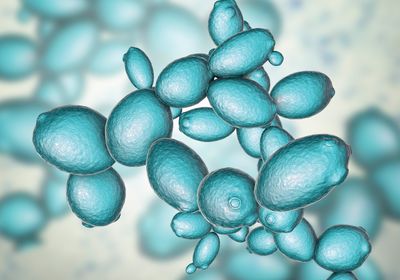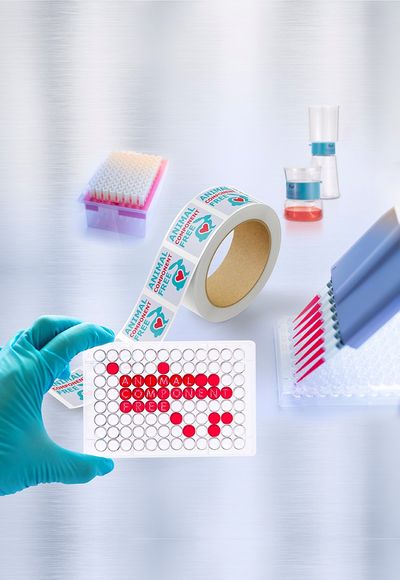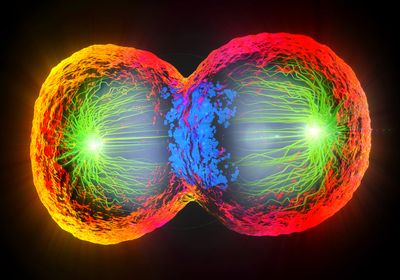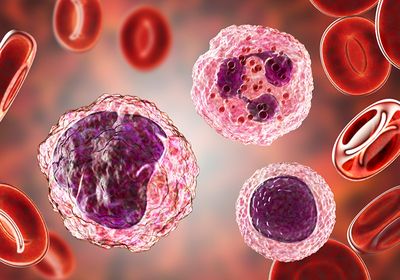ABOVE: Saccharomyces cerevisiae © istock.com, dr_microbe
Vakil Takhaveev joined Matthias Heinemann’s laboratory at the University of Groningen in 2015 to research cellular metabolism. Early in his studies using budding yeast as a model organism, he peered into the microscope and observed mesmerizing fluctuations in the autofluorescence of some metabolic markers; he quickly became fascinated by the idea that metabolism oscillates like waves over time. “That was aesthetically attractive to me. I wanted to find out the cause,” he said.
Back then, Takhaveev planned to extend a previous study where data suggested that metabolic oscillations in yeast work in synchrony with cell cycle regulators to drive cell growth and division.1 Temporal changes in the levels of NADPH and ATP, which play an essential role in many biochemical reactions inside the cell, indicated that certain metabolic pathways are differentially active at specific moments, said Heinemann. The next step was to find out which processes inside the cell created this rhythm.
In a study published in Nature Metabolism, Takhaveev and Heinemann reported that different cellular building blocks such as proteins and lipids are not made at the same time during the cell cycle. Additionally, these fluctuations in the production of macromolecules are responsible for the metabolic oscillations they previously described.2
Using the brewer’s yeast Saccharomyces cerevisiae, Takhaveev and his colleagues took a closer look at other macromolecules, starting with the production of proteins, a process considered to increase either exponentially or at a constant rate during the yeast cell cycle. The team engineered yeast to express a fluorescent protein when protein synthesis was active and tracked changes in the fluorescent marker in cells cultured in a microfluidic device that enabled the researchers to visualize single cells over an extended period of time. “We saw two waves, and we were impressed because it contradicted what the field knew,” Takhaveev said.
To validate their protein findings, the team devised a new technique named stop-and-respond, in which they combined their expertise in monitoring the levels of NADPH autofluorescence during the cell cycle with strategies to halt the production of specific macromolecules.
To stop protein synthesis, the researchers used cycloheximide, a well known protein synthesis inhibitor, and looked at the levels of NADPH before and after treatment. “We measured these sensitivities to the inhibitor at different moments of the cell cycle, and found, surprisingly, there are also two waves. If these two orthogonal methods show similar [results], then we concluded that there are two waves of production,” Takhaveev said.
Since they observed an unexpected pattern for protein synthesis, they wondered if other macromolecules such as lipids and carbohydrates also followed a dynamic pattern. Using the stop-and-respond method, they treated cells with a lipid synthesis inhibitor and observed a peak of NADPH in the second half of the cell cycle. The researchers then perturbed the production of polysaccharides and saw similar fluctuations in production during the cell cycle.
“Biosynthetic processes are partially temporally segregated, meaning that if a cell grows, not all of these processes start to be active,” Heinemann said.
The team next used a mathematical model to predict how these waves would influence metabolic rates. “There are changes in primary metabolism to satisfy these changing demands in macromolecule production,” Takhaveev said.
These patterns of macromolecule production timing during the cell cycle are relevant contributions, said Nicolas Buchler, a biophysicist at the North Carolina State University who was not involved in the study. “[Scientists have known] from yeast that when the bud is formed, there is a massive growth in volume, which is going to be lipids and carbohydrates,” he said. “It is happening right where you would expect it.”
Michael Polymenis, a biochemist at Texas A&T University who was also not involved in the study, said that the findings are an important first step as they show that global biosynthetic processes are dynamic. “Traditionally, [metabolism] has been seen as something that just goes on and on in the background, as opposed to cell division, which has very specific landmarks. Now we know, if this is corroborated by additional studies, that we have landmarks in cell growth—dynamic landmarks. Hopefully, we will find specific pathways that talk to each other,” Polymenis said.
References
- Papagiannakis A, Niebel B, Wit EC, Heinemann M. Autonomous Metabolic Oscillations Robustly Gate the Early and Late Cell Cycle. Mol Cell. 2017;65(2):285-295.
- Takhaveev V, Özsezen S, Smith EN, et al. Temporal segregation of biosynthetic processes is responsible for metabolic oscillations during the budding yeast cell cycle. Nat Metab. 2023;5(2):294-313.







